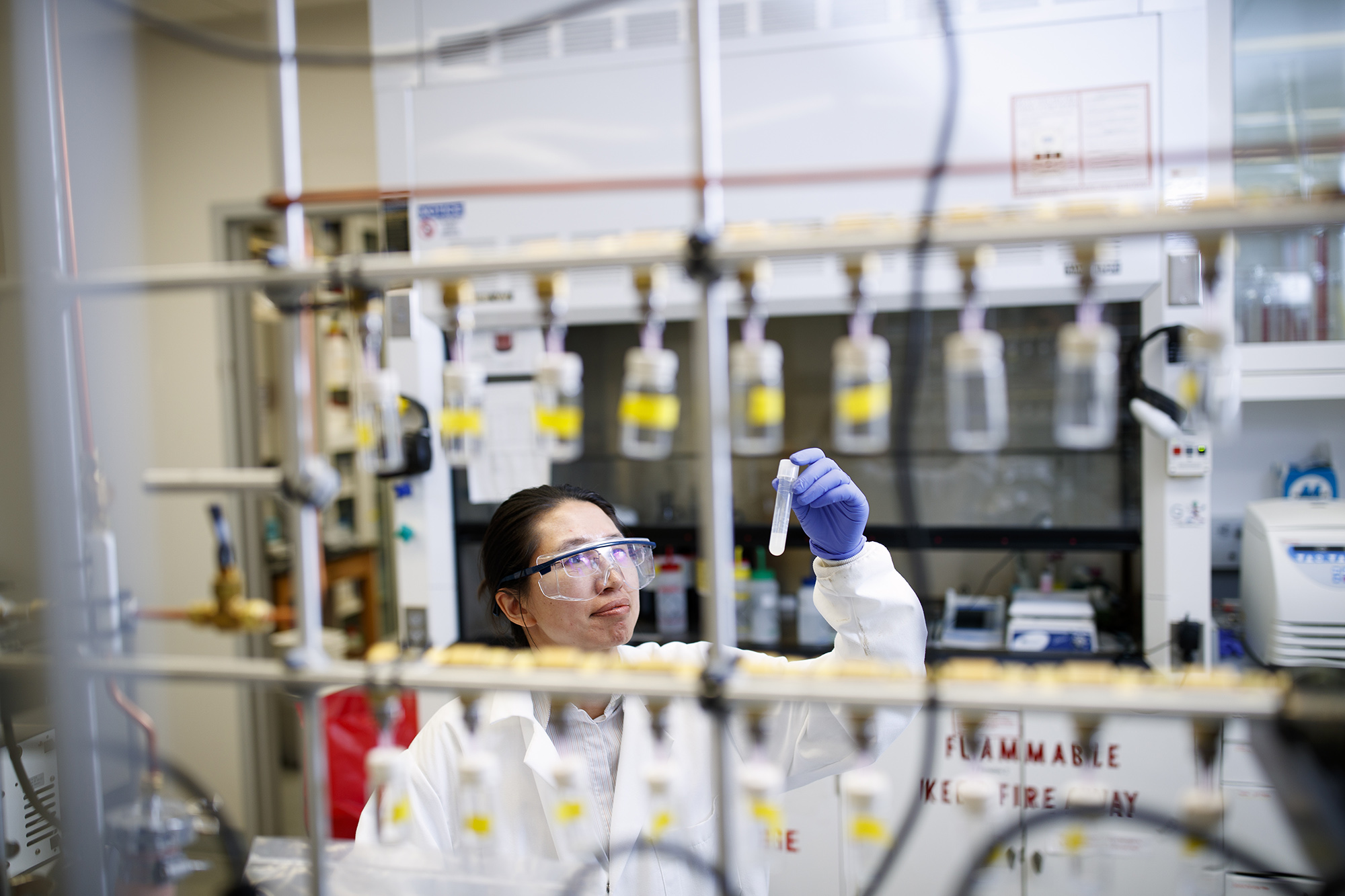
An estimated 42 million protein molecules per cell carry out many of the human body’s most critical functions: transporting oxygen, delivering intercellular messages and driving immune responses, for example. Each protein molecule contains one or more intricately folded chains of amino acids, which form a 3D shape that evolves to respond to the environment and meet the cell’s demands.
This ability of proteins to transform shape may be key to understanding how some pathogens, such as Mycobacterium tuberculosis, or Mtb, evade the immune system response. Mtb causes active tuberculosis in 10 million people worldwide each year, killing about 1.5 million people annually. The University of Nebraska–Lincoln’s Limei Zhang has pinpointed a protein within Mtb — WhiB1 — that may help explain why the disease is so hard to treat.
With a $600,000 grant from the National Science Foundation’s Faculty Early Career Development Program, Zhang, assistant professor of biochemistry, will advance her research on the WhiB1 protein. She’ll also expand outreach efforts that help the public understand proteins as tiny nanomachines that carry out complex tasks within cells.
As a structural biologist, Zhang investigates how a protein molecule’s shape determines its function. Understanding this relationship provides a clearer picture of how the millions of molecules within a cell work in tandem to maintain health, or conversely, how an incorrectly shaped protein causes disease.
Like all proteins, WhiB1 has a unique 3D shape. But this shape isn’t static. Zhang believes this is because, in addition to amino acids, WhiB1 contains an add-on component called an iron-sulfur cluster that is sensitive to small changes in the protein’s surroundings. She theorizes this cluster functions as a sensor, perceiving environmental shifts and triggering changes to the protein’s shape. Shape changes alter a protein’s function and its role in gene expression.
“WhiB1 is a stress-sensing protein,” Zhang said. “With its iron-sulfur cluster, it’s like a guard in the city. It surveys the environment and responds to emergencies by regulating gene expression.”
The cluster’s protective function may help explain how Mtb thwarts the immune system. Both iron and sulfur are highly sensitive to nitric oxide, which is produced by the body when pathogens invade. Upon sensing and interacting with nitric oxide, the cluster may signal WhiB1 to change shape, triggering Mtb to either launch a stress response or enter a dormant phase.
The dormant phase is why up to 13 million people in the U.S. have latent TB. Though these people don’t have symptoms, an average of one in 10 of these cases will progress to active TB requiring medical treatment. Understanding WhiB1’s role as Mtb’s on-off switch may propel development of more effective TB treatments.
But first, Zhang must answer basic research questions about WhiB1. She’ll use the CAREER grant to determine how the protein uses the iron-sulfur cluster to sense nitric oxide, and once it does, how its structure and function change to enable Mtb to survive the immune system. To answer these questions, Zhang will use interdisciplinary techniques including x-ray crystallography, spectroscopy and computational biology. Her laboratory is one of just a few worldwide focused on the WhiB1 protein.
The research has potential applications beyond TB treatment. It could impact agriculture, as WhiB1-like proteins are found in actinobacteria, which are key in replenishing soil system nutrients. In addition, because many antibiotics are derived from actinobacteria, Zhang’s findings may shed light on the bioengineering of medications and other products.
To boost public understanding of structural biology and proteins’ complexity, Zhang is tapping into advances in 3D printing to make low-cost, eye-catching protein models to share at campus and community outreach events. She’s also developing basic demonstration kits that illustrate protein crystallization and other biochemical reactions, as well as animated videos that explain protein structure and function.
“When the public thinks of protein, they think ‘meat,’” Zhang said. “It’s important for people to understand that there are many different types of proteins, and they’re important beyond being a food source.”
In addition, Zhang is collaborating with colleagues to launch a new laboratory course for Husker undergraduates focused on the structure-function relationship in proteins. She’ll also continue to provide hands-on research experience in her laboratory to undergraduates and high school students, particularly those from underrepresented groups.
The National Science Foundation’s CAREER program supports pre-tenure faculty who exemplify the role of teacher-scholars through outstanding research, excellent education and the integration of education and research.








